Symptoms too much mercury. Mercury Poisoning: Symptoms, Sources, Testing, and Treatment
What are the symptoms of mercury poisoning. How can you be exposed to mercury. What medical tests detect mercury exposure. How is mercury poisoning treated.
Understanding Mercury and Its Various Forms
Mercury is a naturally occurring element that can also be released into the environment through human activities. It exists in several forms, each with unique properties and potential health impacts:
- Elemental mercury: A silvery, odorless liquid that slowly evaporates at room temperature, becoming a vapor.
- Inorganic mercury: Mercury combined with other chemical elements like chlorine, sulfur, or oxygen.
- Organic mercury: Mercury combined with carbon-containing compounds, with methylmercury being a common form that accumulates in fish.
Understanding these different forms is crucial for assessing exposure risks and potential health effects. Each type of mercury interacts with the body differently, leading to varied symptoms and health concerns.

Common Sources of Mercury Exposure
Mercury exposure can occur through various sources, depending on the form of mercury involved:
Elemental Mercury Exposure
The most common route of elemental mercury exposure is through inhalation of mercury vapor. This can happen in certain occupational settings or when mercury-containing devices break, releasing droplets and vapor into the air. Even dental amalgams (fillings) containing elemental mercury can release small amounts of vapor.
Inorganic and Organic Mercury Exposure
Exposure to inorganic or organic mercury may occur through skin contact with mercury-containing substances, such as skin lightening creams, or from the use of certain medicines or vaccines that contain mercury.
Methylmercury Exposure
The primary source of methylmercury exposure for most people is through the consumption of fish. Larger predatory fish, both freshwater and marine, tend to contain higher levels of methylmercury due to bioaccumulation. Examples include:
- Freshwater: Black bass, walleye, and pike
- Marine: Swordfish, shark, king mackerel, and tilefish
Is fish consumption the only significant source of methylmercury exposure? While fish is the primary source, it’s important to note that other seafood can also contain methylmercury. Additionally, some industrial processes and environmental contamination can contribute to methylmercury exposure in certain regions.
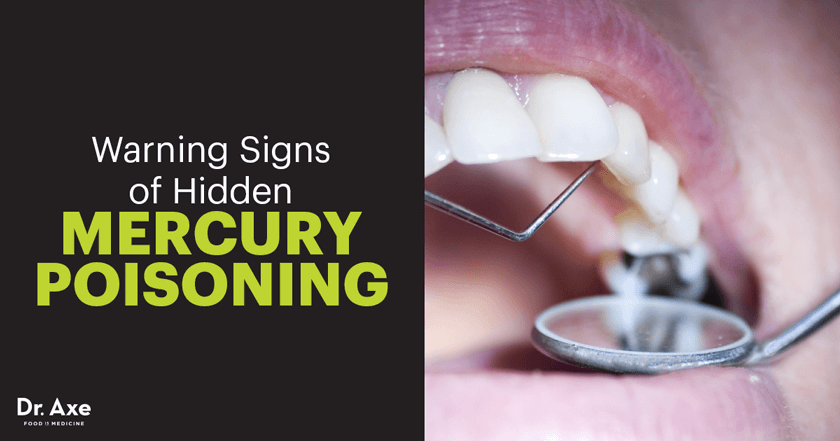
Health Effects of Mercury Exposure
The health effects of mercury exposure can vary widely depending on several factors:
- The form of mercury
- The amount of exposure
- The route and duration of exposure
- Individual characteristics (age, pregnancy status, general health)
Long-term Methylmercury Exposure
Prolonged exposure to high levels of methylmercury primarily affects the nervous system. Symptoms may include:
- Disturbances in vision, hearing, and speech
- Tingling and numbness in fingers and toes
- Lack of coordination
- Muscle weakness
Vulnerability of Children and Unborn Babies
Methylmercury exposure is particularly concerning for children and unborn babies due to their developing nervous systems. The mercury consumed by a pregnant mother can cross the placenta and affect the fetus. It can also be passed through breast milk to nursing infants.
Are there specific developmental concerns associated with mercury exposure in children? Some studies have observed subtle nervous system effects in children exposed to higher levels of methylmercury in the womb or shortly after birth. These effects may include:
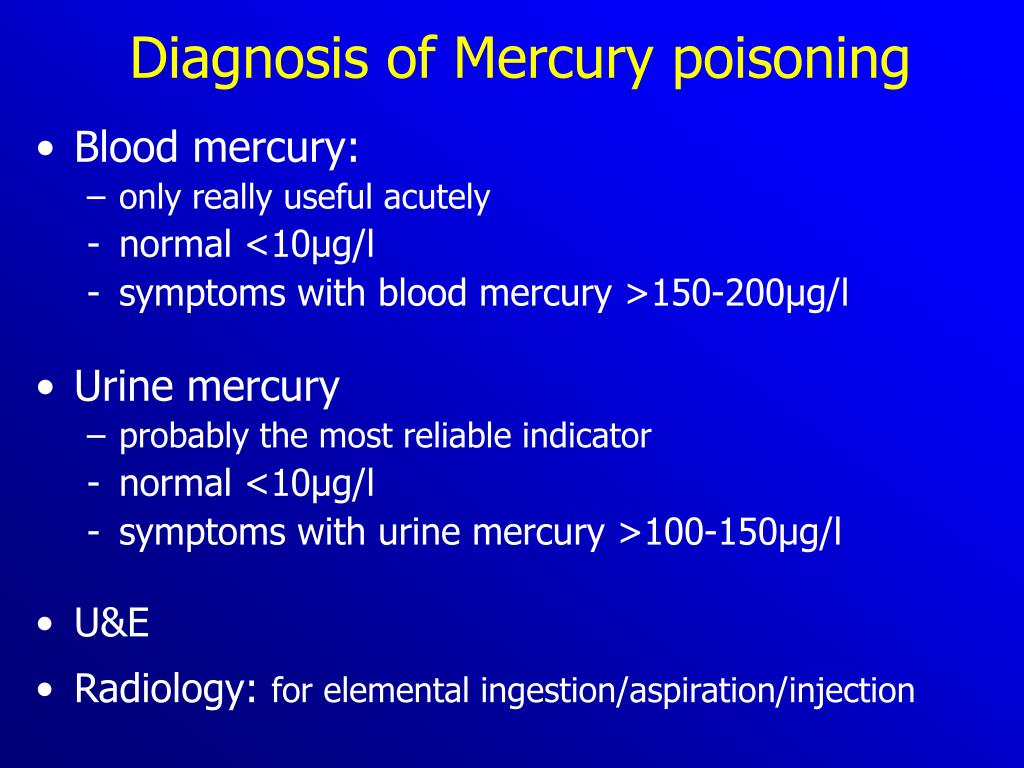
- Altered memory
- Changes in attention span
- Language development delays
However, it’s important to note that the precise blood mercury level associated with harmful effects is not definitively known. Some research suggests that children of mothers with blood mercury levels as low as 30 to 40 ng/ml may exhibit delayed development and subtle nervous system effects during early childhood.
Medical Testing for Mercury Exposure
Detecting mercury exposure typically involves testing either urine or blood samples. Both tests usually measure levels of total mercury, encompassing elemental, inorganic, and organic forms.
Urine Testing
Elevated mercury levels in urine generally indicate exposure to elemental or inorganic mercury sources. This type of exposure is often associated with occupational settings where mercury is used.
Blood Testing
High mercury levels in blood typically suggest exposure to organic mercury, such as from consuming fish containing methylmercury. It can also indicate recent exposure to high levels of elemental mercury vapor.

For most individuals, an elevated blood mercury level is associated with dietary sources, particularly fish and seafood consumption.
Interpreting Test Results
It’s crucial to understand that everyone has a small amount of mercury in their body. Some individuals may have higher than average levels due to dietary habits, occupational exposure, or other environmental factors.
Do specific mercury levels in tests always indicate a health risk? Not necessarily. In New York State, for example, healthcare providers and laboratories are required to report blood or urine mercury test results to the NYS Department of Health when levels reach or exceed certain thresholds:
- Blood: 5 ng/mL (nanograms per milliliter)
- Urine: 20 ng/mL
However, it’s important to note that mercury levels at or above these values do not automatically mean that adverse health effects will occur. The reporting system is designed to identify potential occupational exposures so that measures can be taken to reduce exposure before health effects are expected.

Occupational Mercury Exposure and Safety Measures
Certain occupations carry a higher risk of mercury exposure, particularly those involving the use of elemental mercury. Industries and professions that may encounter mercury include:
- Dental practices (use of amalgam fillings)
- Manufacturing of electrical equipment and measuring devices
- Chemical processing plants
- Mining and refining operations
- Research and laboratory work
To protect workers in these fields, various safety measures and regulations are typically implemented:
Engineering Controls
These include proper ventilation systems, enclosed processes, and automated handling systems to minimize direct contact with mercury.
Personal Protective Equipment (PPE)
Workers may be required to wear specialized protective gear, including:
- Respirators with mercury vapor cartridges
- Impervious gloves and protective clothing
- Safety goggles or face shields
Regular Monitoring
Workplace air monitoring and regular health screenings, including blood and urine mercury tests, are often conducted to ensure exposure levels remain within safe limits.

Training and Education
Comprehensive training programs inform workers about the risks of mercury exposure, proper handling procedures, and emergency protocols in case of spills or accidental exposure.
How effective are these safety measures in preventing occupational mercury exposure? When properly implemented and followed, these measures can significantly reduce the risk of mercury exposure in the workplace. However, ongoing vigilance, regular assessments, and updates to safety protocols are necessary to maintain a safe working environment.
Mercury in Consumer Products and Environmental Concerns
While industrial use of mercury has decreased in many countries, it can still be found in various consumer products and environmental sources:
Consumer Products
Mercury may be present in:
- Some types of thermometers and barometers
- Certain electrical switches and relays
- Some types of light bulbs (e.g., compact fluorescent lamps)
- Older dental amalgam fillings
- Some skin-lightening creams and traditional medicines
Environmental Sources
Mercury can enter the environment through:

- Industrial emissions, particularly from coal-fired power plants
- Mining activities, especially artisanal and small-scale gold mining
- Waste incineration and improper disposal of mercury-containing products
- Natural sources such as volcanic eruptions and forest fires
Are there global efforts to reduce mercury use and emissions? Yes, the Minamata Convention on Mercury, a global treaty aimed at protecting human health and the environment from the adverse effects of mercury, came into force in 2017. It includes provisions to:
- Phase out and phase down mercury use in products and processes
- Control measures on emissions and releases
- Regulate artisanal and small-scale gold mining
- Ensure the environmentally sound management of mercury waste
Many countries have also implemented their own regulations to limit mercury use and emissions, promoting safer alternatives and proper disposal methods for mercury-containing products.
Treatment and Management of Mercury Poisoning
The treatment approach for mercury poisoning depends on the form of mercury involved, the severity of exposure, and the individual’s symptoms. Here are some key aspects of mercury poisoning management:

Immediate Actions
In cases of acute mercury exposure:
- Remove the person from the source of exposure
- Decontaminate the skin and eyes if external contact has occurred
- Seek immediate medical attention
Chelation Therapy
For severe cases of mercury poisoning, chelation therapy may be recommended. This involves administering chelating agents that bind to mercury in the body, allowing it to be excreted more easily. Common chelating agents include:
- Dimercaptosuccinic acid (DMSA)
- 2,3-Dimercapto-1-propanesulfonic acid (DMPS)
- D-penicillamine
Is chelation therapy always necessary for mercury exposure? No, chelation therapy is typically reserved for cases of severe poisoning or very high mercury levels. It carries its own risks and side effects, so the benefits must outweigh the potential risks.
Supportive Care
Treatment often focuses on managing symptoms and preventing further damage. This may include:
- Neurological support and rehabilitation
- Respiratory support if inhalation exposure has occurred
- Nutritional support and hydration
- Management of kidney function if affected
Long-term Monitoring
Patients with significant mercury exposure often require long-term follow-up to monitor for potential delayed effects and to ensure proper recovery. This may involve:
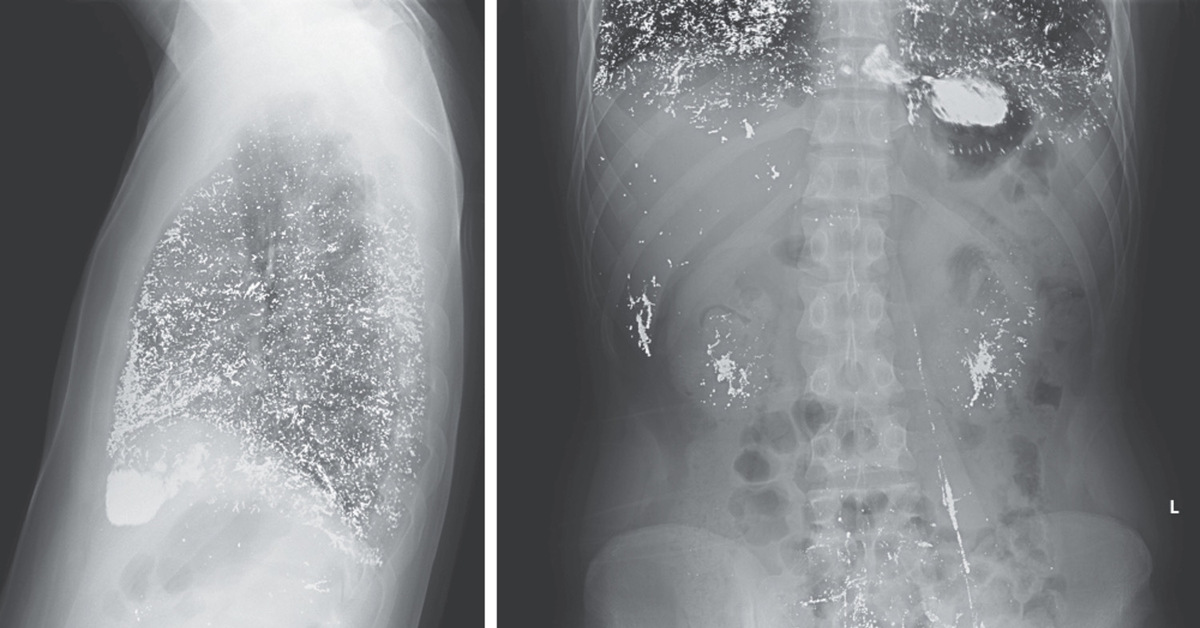
- Regular blood and urine mercury level checks
- Neurological assessments
- Kidney function tests
- Cognitive and developmental evaluations, especially for children
Dietary and Lifestyle Changes
For individuals with elevated mercury levels due to dietary sources, recommendations may include:
- Modifying fish consumption habits
- Choosing lower-mercury fish species
- Avoiding certain consumer products that may contain mercury
How long does it take to recover from mercury poisoning? Recovery time can vary significantly depending on the severity and duration of exposure, as well as individual factors. Some effects may resolve within weeks or months, while others could persist for years or even be permanent in severe cases. Early detection and treatment generally improve the prognosis.
Prevention Strategies and Public Health Initiatives
Preventing mercury exposure is a crucial aspect of public health. Various strategies and initiatives are employed at individual, community, and global levels to reduce mercury exposure risks:
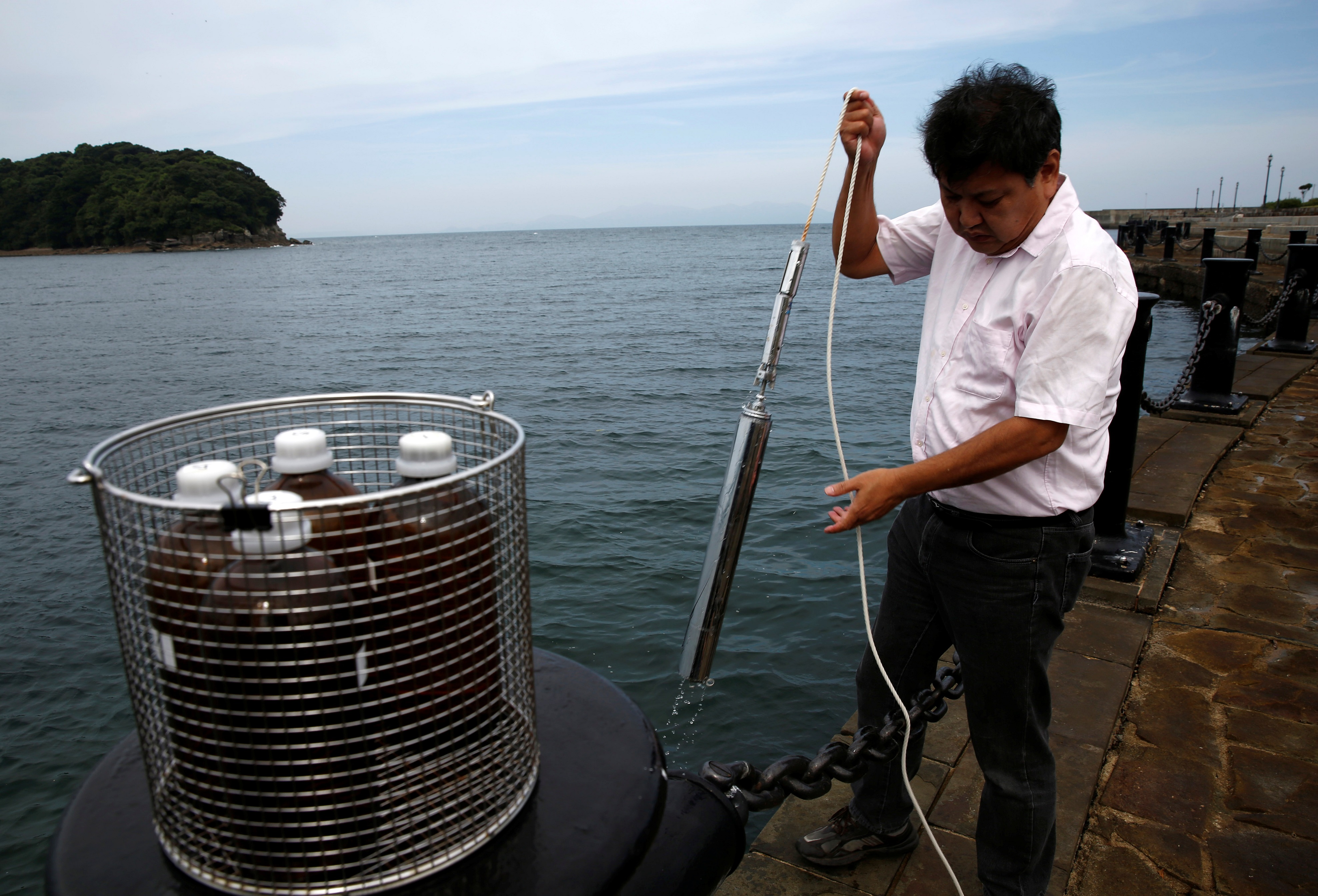
Individual Prevention Measures
People can take several steps to minimize their mercury exposure:
- Follow fish consumption advisories, especially for pregnant women and young children
- Choose low-mercury fish species when consuming seafood
- Properly dispose of mercury-containing products (e.g., fluorescent bulbs, old thermometers)
- Be cautious with skin-lightening creams and traditional medicines that may contain mercury
- Ensure proper ventilation when removing old paint or engaging in activities that might release mercury vapor
Community and Workplace Initiatives
Local and regional efforts to reduce mercury exposure often include:
- Educational programs about mercury risks and safe handling
- Collection and proper disposal programs for mercury-containing products
- Occupational safety regulations and training in industries that use mercury
- Environmental monitoring of mercury levels in water bodies and fish
Global and National Policy Efforts
Larger-scale initiatives to address mercury pollution and exposure include:

- Implementation of the Minamata Convention on Mercury
- Phasing out mercury use in various products and industrial processes
- Promoting cleaner technologies in sectors like power generation and mining
- Establishing and enforcing emissions standards for industrial sources
- Supporting research into mercury alternatives and remediation technologies
Can these prevention strategies significantly reduce global mercury exposure? While challenges remain, coordinated prevention efforts have shown promising results. For example, many countries have seen decreases in mercury emissions from industrial sources and reductions in mercury levels in certain fish populations. However, legacy mercury pollution and ongoing emissions in some regions continue to pose challenges, emphasizing the need for sustained global action.
Emerging Technologies and Research
Ongoing scientific research and technological advancements are contributing to improved mercury detection, remediation, and prevention:
- Development of more sensitive and portable mercury detection devices
- Exploration of novel remediation techniques for mercury-contaminated sites
- Research into the long-term effects of low-level mercury exposure
- Investigation of potential genetic factors influencing mercury toxicity and metabolism
These efforts aim to enhance our understanding of mercury’s environmental behavior and health impacts, ultimately informing more effective prevention and treatment strategies.

Understanding Mercury Exposure Levels
- Understanding Mercury Exposure Levels is available in Portable Document Format (PDF)
What is mercury?
Mercury occurs naturally in the environment and is also released into the environment through human activity. Mercury occurs in several forms.
- Elemental mercury is a silvery, odorless liquid that evaporates slowly at room temperature, becoming a vapor.
- Inorganic mercury is mercury combined with other chemical elements such as chlorine, sulfur or oxygen.
- Organic mercury is mercury combined with carbon-containing compounds. A common form of organic mercury is methylmercury which is produced by microorganisms in water and soil, and which accumulates in fish.
What medical testing is used to detect mercury exposure?
The most commonly accepted methods of assessing mercury exposure are to test urine or blood. Both tests usually measure levels of total mercury (elemental, inorganic and organic).
- Elevated mercury in urine usually indicates exposure to an elemental or inorganic source of mercury, such as from a job that uses mercury.
- Elevated mercury in blood usually indicates exposure to organic mercury (such as from eating fish containing methylmercury) or recent exposure to a high level of elemental mercury vapor. For most people, an elevated blood mercury level is associated with eating fish and other seafood containing organic mercury.
Everyone has a small amount of mercury in his/her body. Some people may have higher than usual levels from eating fish and seafood, working with mercury-containing materials, or from other exposure sources.
Why are test results sent to the New York State Heavy Metals Registry?
Healthcare providers and laboratories are required by the New York State Sanitary Code to report the results of blood or urine mercury tests to the NYS Department of Health when mercury is at or above the following levels:
- blood – 5 ng/mL (nanograms per milliliter)
- urine – 20 ng/mL
Mercury levels at or above these values do not mean that you will develop adverse health effects. The reporting system is designed to identify workers who might be exposed to mercury so measures to reduce exposures can be taken before health effects are expected.
The reporting system is designed to identify workers who might be exposed to mercury so measures to reduce exposures can be taken before health effects are expected.
How can I be exposed to mercury?
- Exposure to elemental mercury most often occurs from breathing air containing elemental mercury vapor. This occurs in some occupations and may also occur when devices containing mercury, such as thermostats or thermometers, break and release mercury droplets and mercury vapor into the air. Small amounts or mercury vapor are also released from dental amalgams (fillings) that contain elemental mercury.
- Exposures to inorganic or organic mercury may come from skin contact with mercury or substances containing mercury (e.g., skin lightening creams), or from use of medicines or vaccines containing mercury.
- Exposure to methylmercury (a form of organic mercury) most often comes from eating fish that contains methylmercury. Usually, greater amounts of methylmercury are found in larger predatory freshwater fish like black bass, walleye and pike, and certain marine fish such as swordfish, shark, king mackerel and tilefish.

What health effects can methylmercury cause?
Whether health effects occur from mercury exposure depends on the amount and form of mercury a person takes in, the route and duration of exposure, and the person’s individual characteristics such as age, pregnancy status and general health.
Long-term exposure to high levels of methylmercury causes effects primarily on the nervous system. Symptoms of long-term high level methylmercury exposure include disturbances in vision, hearing and speech, as well as tingling and numbness in fingers and toes, lack of coordination and muscle weakness. Exposure to methylmercury is of particular concern for children and unborn babies because their nervous systems are still developing and may be more vulnerable. Methylmercury consumed by the mother can enter her fetus and can also be passed on in breast milk to nursing infants. In some scientific studies of populations that consume relatively large amounts of seafood, very subtle nervous system effects such as altered memory, attention and language development in children have been associated with increases in exposure to methylmercury in the womb and/or soon after birth.
Scientists do not know precisely what level of mercury in blood may be associated with harmful effects. Some studies suggest that children of mothers with blood mercury levels as low as 30 to 40 ng/ml may exhibit delayed development and subtle nervous system effects during early childhood. Some reports suggest that similar blood mercury levels may be associated with visual, nervous, or cardiovascular system effects in adults. Blood mercury levels above 100 ng/mL have been reported to be associated with clear signs of mercury poisoning in some individuals (e.g., poor muscle coordination, tingling and numbness in fingers and toes).
How can I reduce my blood methylmercury level?
Altering your diet to eat less of the types of fish known to have high mercury levels can decrease your blood mercury level. Many types of fish do not contain high levels of mercury. Eating a variety of different types of fish and shellfish is a good way to gain the nutritional benefits of eating fish while balancing concerns for mercury exposure.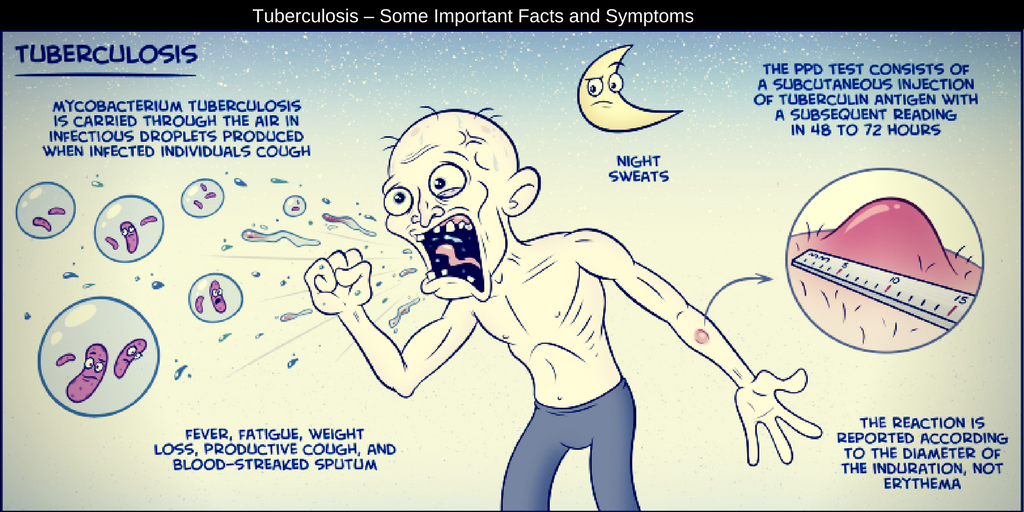 Fish are an important part of a healthy diet because they contain high-quality protein, omega-3 fatty acids, and are low in saturated fat, all of which can benefit growth, development and over all nervous system and cardiovascular health.
Fish are an important part of a healthy diet because they contain high-quality protein, omega-3 fatty acids, and are low in saturated fat, all of which can benefit growth, development and over all nervous system and cardiovascular health.
Information and advice, particularly for marketplace fish such as tuna, swordfish, and shark is available by calling the federal Food and Drug Administration consumer food safety hotline (1-800-FDA-4010) or by visiting their website.
NYSDOH issues advisories on eating sportfish taken from New York State waters because some of these fish contain chemicals at levels that may be harmful to health. Many of these advisories are for fish with elevated mercury levels. This information is available by calling 518-402-7800 or by visiting the NYSDOH website.
If you would like more information on the health effects of mercury or New York State fish consumption advisories, contact the NYSDOH Bureau of Toxic Substance Assessment at 518-402-7800. For more information on other sources of exposure to mercury, please go to the NYSDOH website.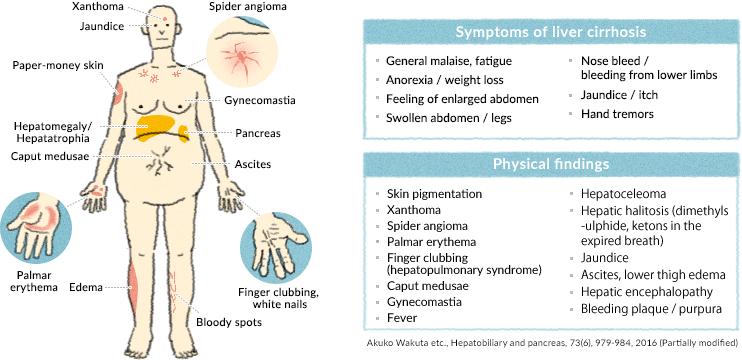
If you would like more information on exposure to and control of mercury in the workplace, contact the NYSDOH Bureau of Occupational Health and Injury Prevention, at 518-402-7900.
Mercury Poisoning From Unregulated Beauty Products May Cause Vision Loss, FDA Warns
Recent headlines claim a woman went blind from high levels of mercury found in a skin care product. Could cosmetics bought over-the-counter really cause permanent vision loss?
It is possible, said Ashley Brissette, MD, ophthalmologist at Weill Cornell Medicine in New York. High amounts of mercury can cause various health complications, including damage to the eye. While the average person is not likely to get mercury poisoning, unregulated cosmetics sometimes contain the toxin. Without clear labeling, it can be difficult to tell which products are actually safe.
Can I go blind from mercury poisoning?
Several studies suggest mercury from unsafe occupational environments, food contamination, or in beauty products containing the chemical can be hazardous to a person’s health, including eye health.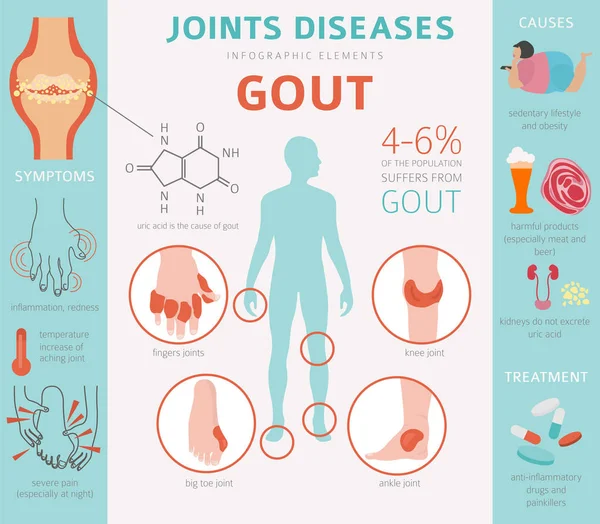 Mercury can be inhaled, ingested, or absorbed through the skin, and can affect many areas of the body by getting into a person’s blood stream.
Mercury can be inhaled, ingested, or absorbed through the skin, and can affect many areas of the body by getting into a person’s blood stream.
In terms of eye health, high levels of mercury can affect all parts of the eye. Known symptoms include discolorization of the lens, blurry vision, conjunctivitis, or even peripheral and central vision loss if the retina or optic nerve are affected.
“Because cosmetics are an unregulated industry, it can be difficult to study and quantify. But we do know that high levels of mercury are not good for the body,” said Dr. Brissette. “The more time spent exposed and the higher the amount of toxins, the more risk someone is for health complications, including vision loss.”
How much mercury is too much?
The U.S. Food and Drug Administration (FDA) advises mercury should only be used in a very small amounts, no more than 65 parts per million (ppm) in the finished product.
How do I know if my cosmetic product has mercury in it?
Mercury is most often found in skin lightening or anti-aging products.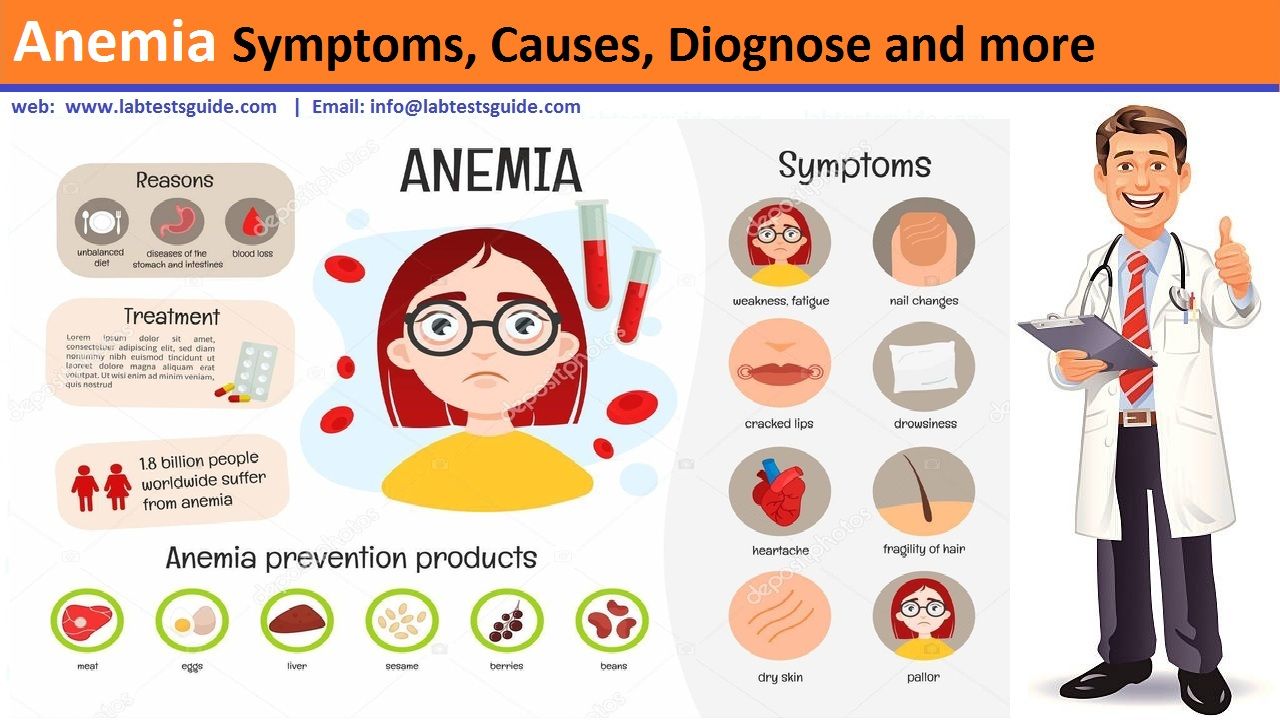 Though the FDA does provide guidelines for safe mercury use in small doses, cosmetics is an unregulated industry. That means that beauty products do not need to get approved before being sold. That’s how products with unsafe amounts of mercury can sometimes still be sold online or in stores.
Though the FDA does provide guidelines for safe mercury use in small doses, cosmetics is an unregulated industry. That means that beauty products do not need to get approved before being sold. That’s how products with unsafe amounts of mercury can sometimes still be sold online or in stores.
The FDA suggests the following for consumer safety:
- Check the ingredients list. If mercury is listed, don’t buy it.
- Don’t buy products without labels. The FDA requires all products include an ingredients list. If the product is unlabeled, assume the product is being sold illegally.
- Avoid buying products online from disreputable retailers.
- Throw out products you suspect might contain mercury. Check local hazardous waste guidelines for how to best dispose of the product safely.
- Seek medical attention immediately if you experience any symptoms after using a new cosmetic product, including numbness, changes in vision, changes in hearing, tremors or irritability.

- Speak to your ophthalmologist before using new skin and eye care products.
Should I stop eating fish and other foods with mercury in it?
Although seafood does contain mercury, a large body of research shows there are health benefits linked to eating fish regularly. A diet including moderate amounts of seafood and plenty of fruits and vegetables, also known as the Mediterranean diet, is good for eye health and could even reduce risk of eye disease.
Some fish have lower mercury levels than others. The FDA recommends pregnant women and children under the age of 11 avoid eating fish with higher levels of mercury. This chart can be referenced for fish choices based on mercury levels.
While most people won’t need to make significant lifestyle changes to avoid mercury poisoning, the public should be aware of the danger of too much exposure. If you have any health concerns or are unsure if you are at risk, speak to your ophthalmologist.
Poisoning by mercury, its vapors and compounds
Mercury is a type of toxic metal that takes many forms in the environment.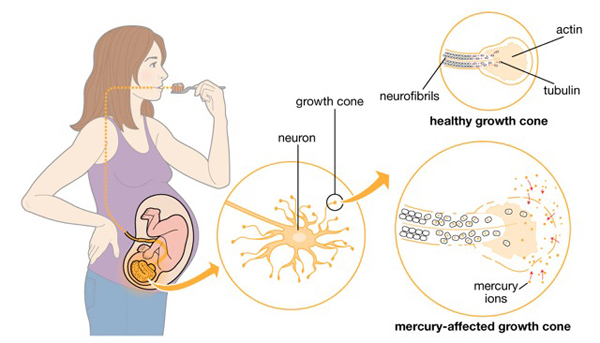 The most common cause of mercury poisoning is the consumption of too much methylmercury or organic mercury.
The most common cause of mercury poisoning is the consumption of too much methylmercury or organic mercury.
Small amounts of mercury are present in everyday foods and commodities, which may not affect health. However, too much mercury can be poisonous. Mercury itself is a natural poison, but its amount in the environment is increasing as a result of industrialization. The metal can seep into soil and water and eventually into animals such as fish.
Dietary mercury intake is the most common cause of this type of poisoning. Children and unborn children are most vulnerable to the toxic effects of mercury. You can help prevent many dangers by limiting your exposure to this potentially harmful metal. To do this, many actions need to be taken, but one should start with the development of an OSMS.
Symptoms of mercury poisoning
Mercury is best known for its neurological effects. Too much mercury can cause:
- anxiety;
- depression;
- irritability;
- memory problems;
- numbness;
More often than not, mercury poisoning worsens over time. However, the sudden onset of any of these symptoms may be a sign of acute toxicity. Call your doctor right away if you suspect mercury poisoning.
However, the sudden onset of any of these symptoms may be a sign of acute toxicity. Call your doctor right away if you suspect mercury poisoning.
Adults with severe mercury poisoning may experience:
- impaired hearing and speech,
- impaired coordination,
- muscle weakness,
- loss of nerves in the arms and face,
- trouble walking.
Mercury poisoning can also impair the development of the fetus and the child at an early age.
Health effects of mercury
Main routes of exposure include: inhalation, skin contact, skin absorption, eye contact.
- Inhalation. Very toxic. May cause flu-like illness 3-10 hours after contact. Symptoms may include chest tightness, cough, headache, fever, muscle aches, and runny nose. Symptoms usually disappear within 48 hours of exposure. May cause lung damage. Symptoms may include coughing, shortness of breath, difficulty breathing, and chest tightness.
 May cause a life-threatening buildup of fluid in the lungs (pulmonary edema). May harm the nervous system. Symptoms include tremors (initially affecting the hands and sometimes other parts of the body), emotional instability (including irritability, excessive shyness, loss of confidence, and nervousness), insomnia, memory loss, muscle weakness, headaches, slow reflexes, and loss of sensation or numbness. May cause inflammation of the mouth (stomatitis), sometimes with a metallic taste, profuse salivation and difficulty swallowing. Other digestive system effects include abdominal pain, nausea, vomiting, and diarrhea. May harm the kidneys. Kidney function tests may show abnormal results.
May cause a life-threatening buildup of fluid in the lungs (pulmonary edema). May harm the nervous system. Symptoms include tremors (initially affecting the hands and sometimes other parts of the body), emotional instability (including irritability, excessive shyness, loss of confidence, and nervousness), insomnia, memory loss, muscle weakness, headaches, slow reflexes, and loss of sensation or numbness. May cause inflammation of the mouth (stomatitis), sometimes with a metallic taste, profuse salivation and difficulty swallowing. Other digestive system effects include abdominal pain, nausea, vomiting, and diarrhea. May harm the kidneys. Kidney function tests may show abnormal results. - Skin contact. Non-irritating. However, prolonged exposure may cause an allergic skin reaction. May be absorbed through the skin. May cause effects described by inhalation. Read our article on skin diseases.
- Eye contact. Non-irritating.
- Ingestion.
 Not harmful.
Not harmful. - Effects of long-term (chronic) exposure. Very toxic. May cause irreparable damage to the nervous system. The classic sign of mercury poisoning is a subtle tremor, usually of the fingers, hands, or arms, and sometimes of the eyelids, lips, tongue, and entire body. Many professional studies show that tremors become more pronounced with longer exposure to mercury. Tremor is an indicator of prolonged exposure to mercury vapor at low levels. Behavioral and personality changes such as irritability, agitation and shyness, psychotic reactions such as delirium and hallucinations, loss of appetite, fatigue, insomnia, short term memory loss and nerve conduction disturbance have also been reported after prolonged exposure. May damage the kidneys. Kidney function tests may show abnormal results. May cause an allergic skin reaction in some people. In sensitized people, contact with very small amounts of the product may cause an allergic reaction. Symptoms include redness, rash, itching, and swelling.
 This reaction can spread from the hands to the face and body. Repeated exposure will intensify the response. Mercury can affect the heart by causing an increase in blood pressure and/or heart rate.
This reaction can spread from the hands to the face and body. Repeated exposure will intensify the response. Mercury can affect the heart by causing an increase in blood pressure and/or heart rate. - Carcinogenicity. Does not cause cancer.
- Teratogenicity / embryotoxicity. May cause harm to the unborn child based on animal information.
- Reproductive toxicity. Reproductive hazard unknown.
- Mutagenicity. Mutagenic properties have not been identified.
Learn more about the health effects of mercury here.
Complications of mercury poisoning
High levels of mercury can cause long-term and sometimes irreversible neurological damage. The dangers are especially noticeable for young children who are still developing.
Exposure to mercury can lead to brain development problems, which can also affect physical functions such as motor skills. Some children exposed to mercury at a young age may develop learning problems.
Some children exposed to mercury at a young age may develop learning problems.
Adults with mercury poisoning may have permanent brain and kidney damage. Circulatory failure is another possible type of complication.
Related Articles
Toxic Metals in the Workplace
Differences Between Flammable and Combustible Substances
Health Effects of Arsenic
printable
MERCURY IN APARTMENT
No the need to talk about what mercury looks like.
Everyone has seen the mysterious liquid metal behind the thin glass of a medical thermometer or, worse, small silvery balls scattered across the table or floor. A broken thermometer is the most common cause of mercury vapor getting into indoor air. If the metal is assembled in a timely manner and completely, then you can forget about the unfortunate incident. If assembled, but not immediately, then it’s also not very scary – 1 gram, namely, so much mercury is contained in a conventional domestic-made medical thermometer (up to 2 grams in an imported similar purpose), in a normal situation, it’s still not so large a quantity to cause severe poisoning.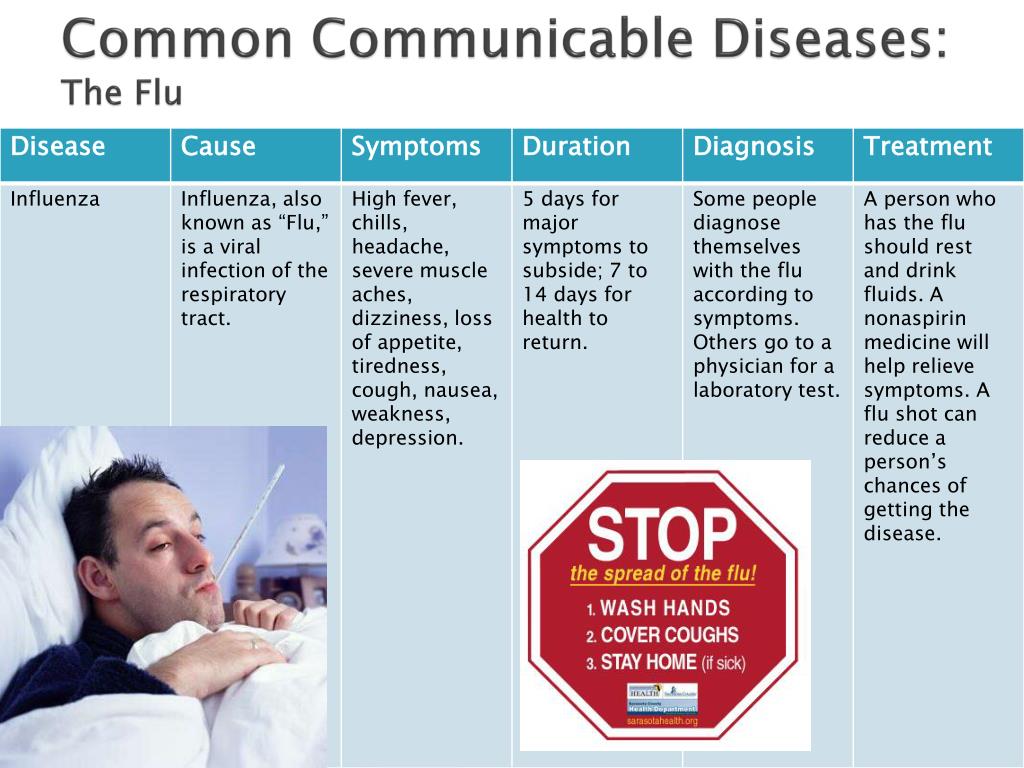 Mercury vapor concentrations reach critically dangerous values only under certain conditions (liquid mercury is dangerous, primarily due to its volatility). Intensive ventilation for 1-2 months – and the air is practically clean: mercury concentrations “by themselves” decrease to insignificant values. The danger exists in the following cases:
Mercury vapor concentrations reach critically dangerous values only under certain conditions (liquid mercury is dangerous, primarily due to its volatility). Intensive ventilation for 1-2 months – and the air is practically clean: mercury concentrations “by themselves” decrease to insignificant values. The danger exists in the following cases:
- mercury got on upholstered furniture, carpet, children’s toys, clothes, rolled under the baseboard or in the cracks of the parquet;
- mercury was not collected, and it was scattered on the soles of slippers and furry paws throughout the apartment;
- mercury got into the digestive tract of a person (more often a child).
The most serious case is by no means the third. Symptoms of mercury poisoning (when it enters through the esophagus) are immediately visible – cyanosis of the face, shortness of breath, etc. The first thing to do in such a situation is to dial the ambulance number and cause the patient to vomit. With timely medical assistance, human life and health are saved. But the most dangerous is when mercury remains undetected and enters the body by inhalation of vapors. Mercury is a substance of hazard class I (according to GOST 17.4.1.02-83), a thiol poison. The degree of the toxic effect of mercury is determined primarily by how much of the metal had time to react in the body before it was removed from there, i.e. It is not mercury itself that is dangerous, but the compounds that it forms. When entering the body in high concentrations, mercury has the ability to accumulate in the internal organs: kidneys, heart, brain. Intoxication occurs mainly through the respiratory tract, about 80% of inhaled mercury vapor is retained in the body. Salts and oxygen contained in the blood contribute to the absorption of mercury, its oxidation and the formation of mercury salts. Acute poisoning with mercury salts is manifested in intestinal upset, vomiting, swelling of the gums. A decline in cardiac activity is characteristic, the pulse becomes rare and weak, fainting is possible .
With timely medical assistance, human life and health are saved. But the most dangerous is when mercury remains undetected and enters the body by inhalation of vapors. Mercury is a substance of hazard class I (according to GOST 17.4.1.02-83), a thiol poison. The degree of the toxic effect of mercury is determined primarily by how much of the metal had time to react in the body before it was removed from there, i.e. It is not mercury itself that is dangerous, but the compounds that it forms. When entering the body in high concentrations, mercury has the ability to accumulate in the internal organs: kidneys, heart, brain. Intoxication occurs mainly through the respiratory tract, about 80% of inhaled mercury vapor is retained in the body. Salts and oxygen contained in the blood contribute to the absorption of mercury, its oxidation and the formation of mercury salts. Acute poisoning with mercury salts is manifested in intestinal upset, vomiting, swelling of the gums. A decline in cardiac activity is characteristic, the pulse becomes rare and weak, fainting is possible . . In chronic poisoning with mercury and its compounds, a metallic taste appears in the mouth, friability of the gums, severe salivation, slight excitability, weakening of memory. The probability of such poisoning exists in all rooms where mercury is in contact with air. Particularly dangerous are the smallest drops of spilled mercury, clogged under baseboards, linoleum, in the cracks of the floor, in the pile of carpets and furniture upholstery. The total surface of small mercury balls is large, and evaporation is more intense. If the mercury balls are on underfloor heating, evaporation is greatly accelerated. With prolonged exposure to even relatively low concentrations (on the order of hundredths and thousandths of mg/m3), the nervous system is damaged. The main symptoms: headache, irritability, irritability, decreased performance, fatigue, sleep disturbance, memory impairment, apathy (mercury neurasthenia). At the same time, catarrhal phenomena of the upper respiratory tract occur. There is even a term: Mercurialism – “general poisoning of the body during chronic exposure to mercury vapor and its compounds, slightly exceeding the sanitary norm, for several months or years.
. In chronic poisoning with mercury and its compounds, a metallic taste appears in the mouth, friability of the gums, severe salivation, slight excitability, weakening of memory. The probability of such poisoning exists in all rooms where mercury is in contact with air. Particularly dangerous are the smallest drops of spilled mercury, clogged under baseboards, linoleum, in the cracks of the floor, in the pile of carpets and furniture upholstery. The total surface of small mercury balls is large, and evaporation is more intense. If the mercury balls are on underfloor heating, evaporation is greatly accelerated. With prolonged exposure to even relatively low concentrations (on the order of hundredths and thousandths of mg/m3), the nervous system is damaged. The main symptoms: headache, irritability, irritability, decreased performance, fatigue, sleep disturbance, memory impairment, apathy (mercury neurasthenia). At the same time, catarrhal phenomena of the upper respiratory tract occur. There is even a term: Mercurialism – “general poisoning of the body during chronic exposure to mercury vapor and its compounds, slightly exceeding the sanitary norm, for several months or years. ”
”
Mercury vapor concentrations that can lead to severe chronic disease range from 0.001 to 0.005 mg/m3 over several months of exposure. Acute poisoning can occur at 0.13 – 0.80 mg / m3. Fatal intoxication develops when 2.5 g of mercury vapor is inhaled. The maximum permissible concentration of mercury vapor in the atmospheric air is 0.0003 mg/m3 (GN 2.1.6.1338-03 “Maximum Permissible Concentrations (MPC) of pollutants in the atmospheric air of populated areas”). The Sanitary and Epidemiological Requirements for Residential Buildings and Premises (SanPiN 2.1.2.1002-00) contain a ban on exceeding this value.
A broken thermometer immediately creates up to 100-200 MPC in the room where the drops are left (data from Ecospace 2014). With such a concentration of mercury vapor in the indoor air, a healthy adult after some time (from several days to several months) develops signs of chronic mercury poisoning. For violations of the child’s health, a 1.5-fold excess of the MPC in the same period is sufficient. However, mercury concentrations are rapidly decreasing already by the 3rd day to 50-80 MPC due to the weathering of atomic mercury (not metallic)
However, mercury concentrations are rapidly decreasing already by the 3rd day to 50-80 MPC due to the weathering of atomic mercury (not metallic)
Keep in mind that if the apartment you live in is not new, then there is a possibility that the thermometers in it have already been broken. And where your office is now, there were previously warehouses or workshops of enterprises whose activities could be related to the use of mercury. A characteristic feature of mercury pollution is their hidden, local nature. Such contamination can only be detected using special equipment. Our data indicate that the presence of mercury vapor, including concentrations exceeding the MPC in public, fig. 1, and residential, fig. 2, indoors, not at all uncommon. Therefore, an examination of an apartment or office for the presence of mercury vapor in the air is a necessary condition for your peace of mind. Modern equipment allows you to quickly and reliably determine the presence of sources of mercury vapor in the premises and on the ground. Usually, inspection of an apartment or office takes no more than an hour.
Usually, inspection of an apartment or office takes no more than an hour.
Below, for example, are tables showing the frequency of mercury vapor detection by our specialists in residential and office premises for 9 months of 2007 (in numbers – the number of premises examined):
Fig.1. 1 — mercury was not detected, 2 — mercury was detected in concentrations not exceeding MPC, 3 — mercury was detected in concentrations exceeding MPC.
Fig. 2. 1 — mercury was not detected, 2 — mercury was detected in concentrations not exceeding MPC, 3 — mercury was detected in concentrations exceeding MPC.
It should be taken into account that if the calls of our specialists for air testing for mercury in residential premises were mainly associated with a reasonable suspicion of the presence of mercury in the air, then in the case of offices, the analysis for mercury was carried out for preventive purposes.
The question often arises: is it possible to poison the air in the whole apartment with one broken thermometer? According to our research (Ecospace), if a thermometer is broken in an apartment and visible balls of mercury are removed, then the concentration of vapors usually does not exceed the MPC. Under ideal conditions (good ventilation, large apartment volume), mercury in such an amount (less than 1 gram) will evaporate in a few months without causing significant harm to the health of residents. In half of the cases, mercury vapors were detected (in concentrations 5-6 times lower than the MAC), even if all the visible part of the metallic mercury, according to the residents, was collected. Several times we recorded significant excesses of the permissible concentrations of mercury vapor in the internal air of the apartment (2-4 times). However, here there was repeated entry of mercury into the room from broken thermometers (2-3 times), most often on carpets and/or upholstered furniture. In any case, mercury vapor, even in low concentrations, is not what a person should breathe in the already unhealthy atmosphere of a metropolis.
Under ideal conditions (good ventilation, large apartment volume), mercury in such an amount (less than 1 gram) will evaporate in a few months without causing significant harm to the health of residents. In half of the cases, mercury vapors were detected (in concentrations 5-6 times lower than the MAC), even if all the visible part of the metallic mercury, according to the residents, was collected. Several times we recorded significant excesses of the permissible concentrations of mercury vapor in the internal air of the apartment (2-4 times). However, here there was repeated entry of mercury into the room from broken thermometers (2-3 times), most often on carpets and/or upholstered furniture. In any case, mercury vapor, even in low concentrations, is not what a person should breathe in the already unhealthy atmosphere of a metropolis.
What to do if the thermometer breaks? The first is not to panic; in domestic conditions, competent demercurization can be carried out independently. Next:
Next:
1. Open windows for fresh air access and lowering the temperature in the room (the warmer it is in the apartment, the more actively the metal evaporates).
2. Restrict people’s access to the room where the thermometer broke (close the doors) in order to prevent the spread of mercury to adjacent rooms and the spread of vapors around the apartment, lay a rug soaked in a solution of potassium permanganate at the entrance.
3. Start the demercurization process. Currently, several companies produce kits for the neutralization of household mercury pollution.
Usually detailed instructions are included with the kit. It is useful to have it in your first aid kit, but we assume that you do not have such a kit. Therefore, you should do the following:
- Carry out a thorough inspection of things and surfaces that could get drops of mercury. When examining things and surfaces, you can highlight with a lamp, then even the smallest drops will be clearly visible.
 All contaminated items should be placed in plastic bags and taken out of the room.
All contaminated items should be placed in plastic bags and taken out of the room. - Using rubber gloves, carefully and carefully collect all the thermometer fragments and mercury balls in any sealed container (for example, a glass jar with a polyethylene lid). A medical pear with a thin tip, an enameled scoop, a sheet of thick paper, and an adhesive plaster will help well in this work. The use of a vacuum cleaner is strongly discouraged, although professional demercurizers often use this technique. Firstly, when collecting mercury with a vacuum cleaner, the concentration of vapors sharply increases in the room, and when working without protective equipment, you can get tangible poisoning. Secondly, after such a procedure, a conventional vacuum cleaner can no longer be used for its intended purpose due to heavy pollution. Washing vacuum cleaners can be restored only after thorough washing with special solutions.
- Treat the floor and objects that have been exposed to mercury with a solution of potassium permanganate or a chlorine-containing preparation.
 Complete chemical demercurization takes place in 2 stages. 1st stage: in a plastic (not metal!) Bucket, a solution of chlorine-containing bleach “Whiteness” is prepared at the rate of 1 liter of the product per 8 liters of water (2% solution). With the resulting solution, using a sponge, brush or floor cloth, the floor and other contaminated surfaces are washed. Particular attention is paid to the cracks of parquet and skirting boards. The applied solution is kept for 15 minutes, then washed off with clean water. 2nd stage: the clean floor is treated with a 0.8% solution of potassium permanganate (potassium permanganate): 1 gram per 8 liters of water. These solutions are safe for parquet and linoleum, do not change their color and texture. Chemically bound mercury is black salt.
Complete chemical demercurization takes place in 2 stages. 1st stage: in a plastic (not metal!) Bucket, a solution of chlorine-containing bleach “Whiteness” is prepared at the rate of 1 liter of the product per 8 liters of water (2% solution). With the resulting solution, using a sponge, brush or floor cloth, the floor and other contaminated surfaces are washed. Particular attention is paid to the cracks of parquet and skirting boards. The applied solution is kept for 15 minutes, then washed off with clean water. 2nd stage: the clean floor is treated with a 0.8% solution of potassium permanganate (potassium permanganate): 1 gram per 8 liters of water. These solutions are safe for parquet and linoleum, do not change their color and texture. Chemically bound mercury is black salt. - In the future, it is desirable to regularly wash the floor with a chlorine-containing preparation and intensive ventilation.
The essence of this type of demercurization is that instead of liquid mercury, its compounds are formed – mercury salts, which do not emit toxic vapors into the air and are dangerous only if they enter the esophagus. Experience shows that as a result of timely demercurization, the concentration of mercury vapor in the internal air of the apartment drops by 5-10 times!
Experience shows that as a result of timely demercurization, the concentration of mercury vapor in the internal air of the apartment drops by 5-10 times!
4. Think about your own health:
a) wash gloves and shoes with potassium permanganate and soapy soda solution;
b) rinse your mouth and throat with a slightly pink solution of potassium permanganate;
c) brush your teeth thoroughly;
d) take 2-3 activated charcoal tablets.
5. For disposal of mercury (it must not be poured into the sewer, thrown out the window and together with household waste), please contact the regional Ministry of Emergency Situations. There you are required to take mercury, although sometimes this requires perseverance. However, you can do without the Ministry of Emergency Situations – it is enough to collect mercury in a plastic bag, cover it with bleach (or other chlorine-containing preparations), and wrap it in several plastic bags. You can be sure that mercury is reliably isolated.:max_bytes(150000):strip_icc()/too-much-caffeine-5207200-Final-20ce6c465abf4b459d02d8ce6fbcd817.jpg)

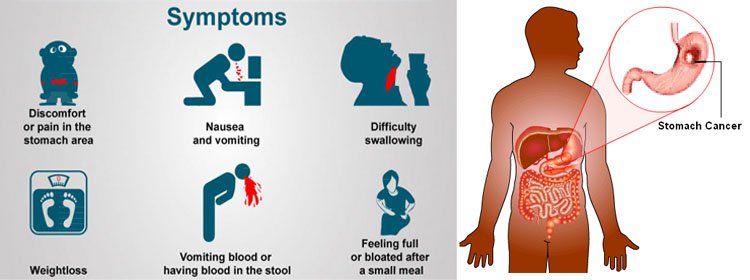

 May cause a life-threatening buildup of fluid in the lungs (pulmonary edema). May harm the nervous system. Symptoms include tremors (initially affecting the hands and sometimes other parts of the body), emotional instability (including irritability, excessive shyness, loss of confidence, and nervousness), insomnia, memory loss, muscle weakness, headaches, slow reflexes, and loss of sensation or numbness. May cause inflammation of the mouth (stomatitis), sometimes with a metallic taste, profuse salivation and difficulty swallowing. Other digestive system effects include abdominal pain, nausea, vomiting, and diarrhea. May harm the kidneys. Kidney function tests may show abnormal results.
May cause a life-threatening buildup of fluid in the lungs (pulmonary edema). May harm the nervous system. Symptoms include tremors (initially affecting the hands and sometimes other parts of the body), emotional instability (including irritability, excessive shyness, loss of confidence, and nervousness), insomnia, memory loss, muscle weakness, headaches, slow reflexes, and loss of sensation or numbness. May cause inflammation of the mouth (stomatitis), sometimes with a metallic taste, profuse salivation and difficulty swallowing. Other digestive system effects include abdominal pain, nausea, vomiting, and diarrhea. May harm the kidneys. Kidney function tests may show abnormal results. Not harmful.
Not harmful. This reaction can spread from the hands to the face and body. Repeated exposure will intensify the response. Mercury can affect the heart by causing an increase in blood pressure and/or heart rate.
This reaction can spread from the hands to the face and body. Repeated exposure will intensify the response. Mercury can affect the heart by causing an increase in blood pressure and/or heart rate. All contaminated items should be placed in plastic bags and taken out of the room.
All contaminated items should be placed in plastic bags and taken out of the room.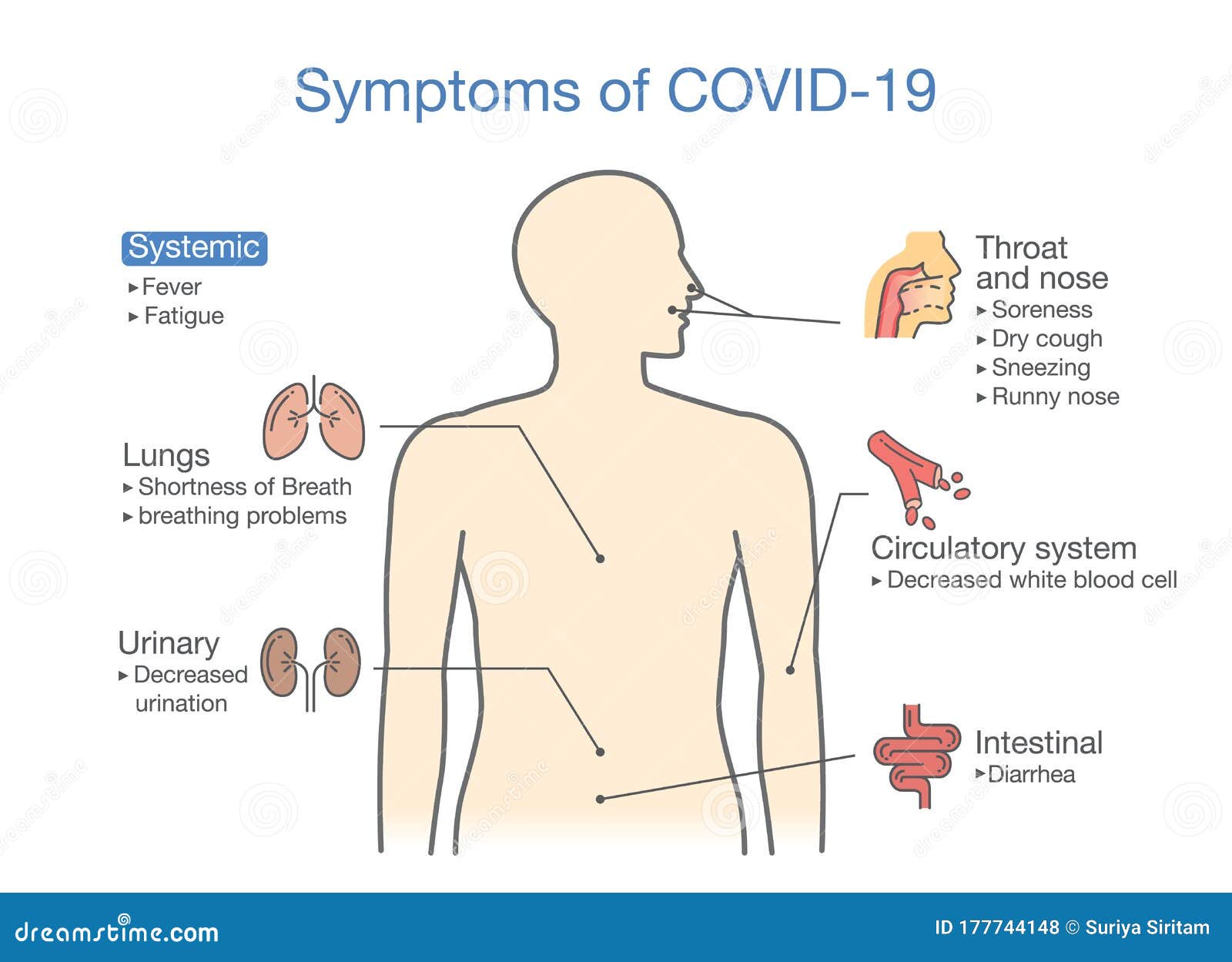 Complete chemical demercurization takes place in 2 stages. 1st stage: in a plastic (not metal!) Bucket, a solution of chlorine-containing bleach “Whiteness” is prepared at the rate of 1 liter of the product per 8 liters of water (2% solution). With the resulting solution, using a sponge, brush or floor cloth, the floor and other contaminated surfaces are washed. Particular attention is paid to the cracks of parquet and skirting boards. The applied solution is kept for 15 minutes, then washed off with clean water. 2nd stage: the clean floor is treated with a 0.8% solution of potassium permanganate (potassium permanganate): 1 gram per 8 liters of water. These solutions are safe for parquet and linoleum, do not change their color and texture. Chemically bound mercury is black salt.
Complete chemical demercurization takes place in 2 stages. 1st stage: in a plastic (not metal!) Bucket, a solution of chlorine-containing bleach “Whiteness” is prepared at the rate of 1 liter of the product per 8 liters of water (2% solution). With the resulting solution, using a sponge, brush or floor cloth, the floor and other contaminated surfaces are washed. Particular attention is paid to the cracks of parquet and skirting boards. The applied solution is kept for 15 minutes, then washed off with clean water. 2nd stage: the clean floor is treated with a 0.8% solution of potassium permanganate (potassium permanganate): 1 gram per 8 liters of water. These solutions are safe for parquet and linoleum, do not change their color and texture. Chemically bound mercury is black salt.